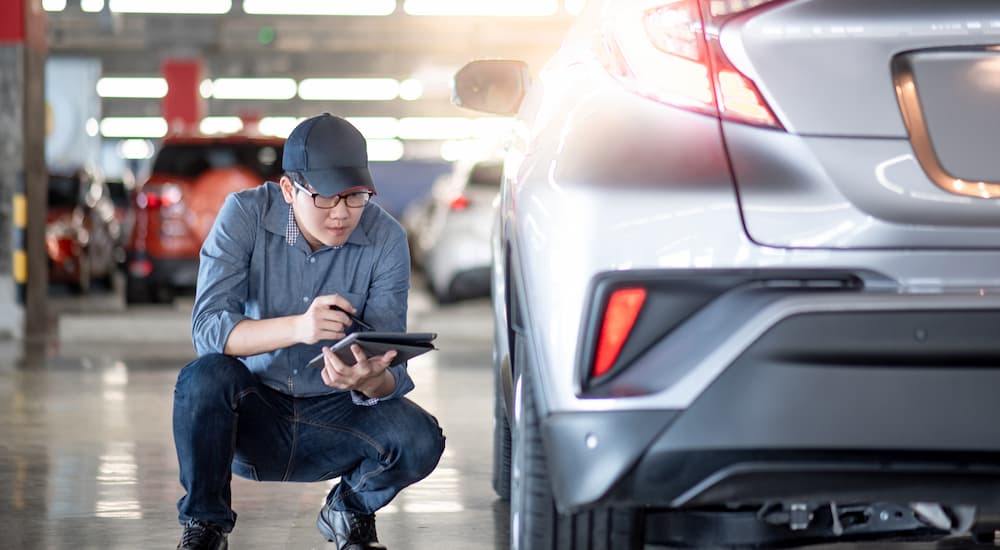As the cost of a new car continues to skyrocket, savvy buyers have found a way to keep their payments affordable without settling for a less expensive vehicle that doesn’t have the features they want. The answer is leasing, and more than ever, buyers are tapping into industry leaders like Nissan and taking advantage of Nissan financing for great lease deals to drive home in the exact vehicle they want.
Before deciding if leasing is right for you, consider the responsibilities that go along with driving a car you don’t technically own. Veteran lease customers understand how to avoid expensive lease return fees, but those new to leasing might not know their role in maintaining the vehicle, both cosmetically and mechanically. Most automakers follow standard guidelines for determining chargeable wear and tear, but it’s always a good idea to check for differences.
Leasing is a lot like a long-term car rental. When you rent a car, you’re expected to return it in the same condition it was when you pulled out of the rental agency’s parking lot. Leasing is similar, but manufacturers allow for some normal wear because of the longer lease term. Here’s what you need to know before signing on the dotted line.

How Leasing Works
When you choose to lease, you’re paying only a percentage of a vehicle’s value. Referred to as depreciation, it’s the dollar amount the vehicle will lose in value over the years you lease it. Depreciation is calculated by deducting the residual value, or the amount the car will be worth at the end of the lease, from the purchase price. For example, if you lease a car that costs $50,000 with a 50% residual value, depreciation, or the amount you’ll pay, is $25,000.
It makes sense, then, that lease payments are often lower than payments on a financed car. When you finance, you’re responsible for paying 100% of the vehicle’s selling price, whether you pay in full upfront in cash or select to pay over time with a traditional loan. Your lease is a loan; only you’re returning the car at the end of the term. Since most leases last three years, an added benefit is that your vehicle is under full factory warranty the entire time you drive it.
Lease customers enjoy the pleasure of swapping out their leased vehicle for a new one every few years so that they can drive a car with the latest safety and infotainment technology. It’s a big plus for many buyers, especially because driver-assist safety technology continues to advance at a blistering pace. Why wait 5-7 years to buy a new car when you can drop your old one off and slide behind the wheel of the latest and greatest model every three years?
What You Need to Know About Wear and Tear
It’s expected that your leased vehicle will accrue some evidence of wear over the years as you drive it. Manufacturers allow for this, so when you bring your car to the dealer to initiate the lease return process, they’ll overlook some cosmetic damage. As for mechanical issues, if you’ve kept up with the manufacturer’s suggested maintenance schedule (found in the vehicle’s owner’s manual), chances are that small mechanical issues will also be allowed. Still, there are caveats.
Most manufacturers will not charge you for dings or small dents, usually those less than 3-inches in diameter. As for scratches, the same 3-inch rule applies. Chips in the exterior paint are forgivable unless there is evidence of an excessive number of chips on a single panel. In other words, if your car received a few door dings at the grocery store, manufacturers understand that it’s all part of the normal ownership experience.
Those who lease are responsible for returning the car with operable tires, which means you’ll want to check the tread depth and decide whether you’ll need to spring for a replacement set before your lease return date. As long as the tread depth is more than 1/8”, you won’t need to worry. During the lease term, it’s a good idea to buy the same type of tire your leased car had when you took it home. This way, you’ll avoid any issues when you return it.
Excess Wear and Tear That Will Cost You
Unfortunately, the list of chargeable damage is much longer than the list of wear and tear expected on a leased car. First, be careful about adding aftermarket equipment, which includes window tint. Any add-ons could void the factory warranty, or worse, inspectors might determine that the aftermarket part caused damage when it was installed or somehow altered the car’s structural or mechanical integrity.
Any mechanical damage from a failure to properly maintain your vehicle is a big red flag for inspectors. Issues range from neglecting to change the oil to ignoring warning lights. Your maintenance schedule is part of your lease agreement, so if you don’t follow it, you’re technically breaching the contract. You’ll not only be subjected to the cost of repairs but any diagnostic fees associated with determining the extent of the damage.
That tiny starburst crack in your windshield may also cost you. Small chips might pass inspection, but if the chip has spread or fissure cracks surround it, you’ll be on the hook for a new windshield. In the cabin, inspectors look for burns or holes in the upholstery, as well as stains that look permanent. Minor discoloration won’t matter, but if any of the cabin’s finishes are damaged, you’ll be responsible for the costs associated with reconditioning and repairing them.
What if your vehicle was involved in an accident or suffered flood or hail damage? If you failed to have the damage repaired to factory specifications (meaning a certified body shop and genuine factory replacement parts), you would be responsible for any required fixes, such as correcting bad paint jobs, replacing subpar parts and body panels, and correcting paint color mismatches.

Lease With Your Eyes Wide Open
Leasing is a great way to “buy” your dream car without shouldering a steep payment. It’s also perfect for drivers who enjoy sliding behind the wheel of a newer car. If you like to keep your cars for a long time or simply prefer to own what you drive, leasing obviously won’t work for you. As a first-time lessee, make sure you ask for documentation on excess wear and tear before you drive home in your new leased car.
During the lease term, consider garaging your car to keep it safe from the elements. Also, make a solid plan to have all factory maintenance completed in the allocated time period. One critical, potentially expensive mistake many new lease customers make is going over the allocated mileage. When you sign your contract, you’ll agree to a maximum number of miles each year. This is how you can lock in the residual value and determine your car’s depreciation. Go over, and you’ll pay dearly.
Typically, automakers charge between $0.15 and $0.30 per mile, which sounds cheap, but can add up fast. As you near the end of your lease, if you think you’ll go over, it’s worth contacting your lease financing company to see if you can purchase additional miles ahead of time. Otherwise, when you drop off your car, you’re looking at a potentially substantial overage fee. So is leasing right for everyone? No, but if you like newer cars and lower payments, you might just be a candidate.



